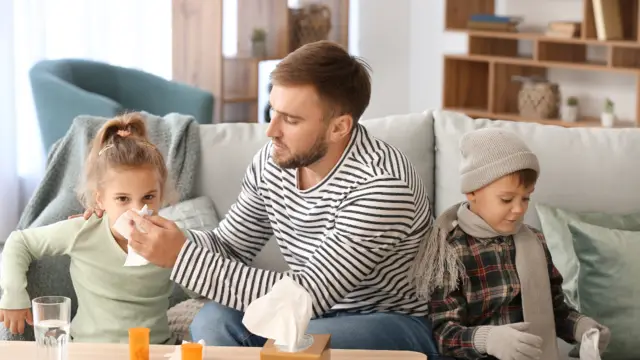Fever in Children: Recognizing Signs and Best Practices for Care
Fever is a common occurrence in children, often signaling that the body is fighting off an infection. As parents and caregivers, it’s essential to recognize the signs of fever and know how to provide the best care for your little ones. This article will explore what fever is when to seek medical attention, and practical steps to manage it effectively.
What Is Fever?
Fever is defined as an elevated body temperature above the normal range. For children, a fever typically occurs when their body temperature reaches 100.4°F (38°C) or higher. It’s essential to note that fever is not a disease but a symptom of an underlying condition.
Recognizing Signs of Fever
- Increased Body Temperature: The most obvious sign of fever is a child’s elevated body temperature. Use a reliable thermometer to measure their temperature accurately.
- Warm to the Touch: When your child feels unusually warm or hot, it’s a strong indicator of fever.
- Flushed Skin: Children with a fever may have flushed or reddened skin, especially on their face and chest.
- Chills and Shivering: Some children experience chills and shivering as their body tries to regulate its temperature.
- General Discomfort: Irritability, fussiness, and overall discomfort are common during a fever episode.
Best Practices for Managing Fever in Children
- Stay Hydrated: Encourage your child to drink plenty of fluids, such as water, clear soups, or oral rehydration solutions. Proper hydration helps the body cope with fever.
- Dress Comfortably: Dress your child in lightweight, breathable clothing. Avoid heavy layers or thick blankets, as they can trap heat.
- Fever-Reducing Medications: Acetaminophen (Tylenol) or ibuprofen (Advil) can help lower fever. Always follow the recommended dosage based on your child’s age and weight.
- Cool Compresses: Apply a cool, damp cloth to your child’s forehead or use a lukewarm bath to help reduce fever.
- Monitor Symptoms: Keep track of your child’s temperature and observe any changes “If the fever continues or gets worse, it’s important to seek advice from a healthcare professional.”
When to Seek Medical Attention
While most fevers are harmless and resolve on their own, certain situations warrant prompt medical evaluation:
- High Fever: If your child’s temperature exceeds 104°F (40°C), seek medical help immediately.
- Persistent Fever: A fever lasting more than 72 hours requires a medical assessment.
- Other Symptoms: Look out for signs like difficulty breathing, severe headache, rash, or dehydration.
Remember that fever is the body’s defense mechanism, but monitoring your child’s well-being is crucial. Trust your instincts as a parent, and don’t hesitate to seek professional advice when needed.
In summary, understanding fever, recognizing its signs, and following best practices for care will empower you to support your child during these common health episodes. Stay informed, stay calm, and prioritize your child’s comfort and recovery.


